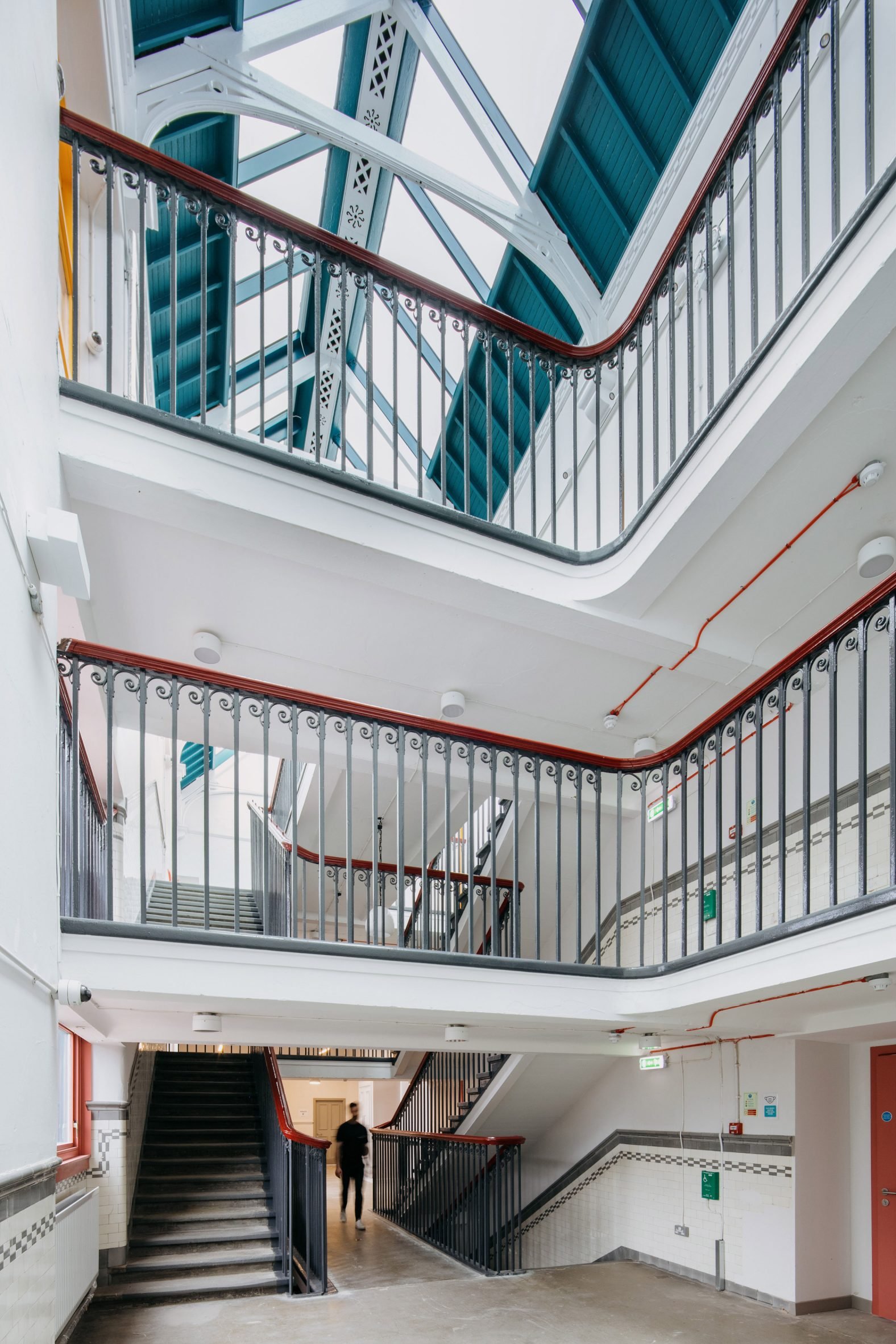Glasgow's Kinning Park Complex makes all the design mags. But it took a 55-day occupation, and 20 years of pushing, to make it happen
We like to focus on community power and its successes in Alternative Global. But sometimes it’s good to recount the disruptive struggles that make what seem like sensibly constructive projects finally happen.
Such it is with the Kinning Park Complex in Glasgow, a glowing vision of urban community restoration that has made the pages of global design/architecture magazines like Dezeen, Architecture Today and the Architects Journal (see pictures below, and video above).
It’s beautiful, this century-old school building glowing with sustainable design. But it comes after a long haul, which began this way (reports the Glasgow Evening Times)
When the news broke in 1996 that the council would no longer fund the Kinning Park community centre, a group of young mothers and local campaigners, who relied on the after-school service at KPC, claimed the building belonged to the taxpayer and blocked the entrance.
After the police failed to disperse the demonstration the deadlock continued for 55 days until the decision was taken to give control to the community.
As they report from their own history:
The council then handed the keys to the community for a peppercorn rent of £1. Care of the building was then led into the new millennium under a local resident, mother and campaigner, Helen Kyle’s organisation Scotland in Europe. Supported primarily by artists and organisations who would rent out the old classrooms and halls to generate an income for the building.
Lesley Riddoch in The National takes on the story:
The lease had to be renewed on a monthly basis, but that was good enough for the impressive list of artists brought in to use the empty classrooms, which included Peter Howson, Belinda Gilbert Scott and Richard Walker.
Helen Kyle’s group ran KPC until 2008, helped establish an arts organisation and ran the building with an ever-changing set of volunteers and artists.
Helen recalls: “There had to be a constant and imaginative way of getting through the days, and we did this by organising small events in the complex such as dance nights, music shows and fundraisers. It was important that the people directly affected by the building’s planned closure got to make the final decision about the way forward.”
Back in 2009, no-one could guess another 10 years would pass before the community was finally in control.
In April 2013, the building’s lease came under dispute as Glasgow City Council decided to re-think its policy of reduced rents for community groups and charities renting their premises.
They also transferred ownership of many buildings (including KPC) to a private company called City Property, which threatened to hike rents from the original £1 per year to almost £2750. After refusing to sign and being handed a notice to quit, KPC had to organise another campaign to remain open.
Now organised as a Community Interest Company, they succeeded in winning a one-year lease with the council, with an option for a 25-year lease. The danger was that City Property could increase the rent to a commercial level of around £20,000 at any time, but without the 25-year lease, it would be impossible for KPC to get the grants needed for large-scale repairs.
With the Community Empowerment Act of 2015 (Scotland), it looked like the cavalry had finally arrived. In 2018 the company reformed as a community-controlled SCIO – a legal structure, purpose-built for the charity sector in Scotland – which meant KPC could use community asset transfer legislation to take over the complex.
But once again, it wasn’t that easy, because City Property is an arms-length organisation and these appear to operate outside the terms of the Community Empowerment Act when it comes to transferring public assets.
The community found the process bruising. They had to fund two valuations and faced delays at key stages. The transfer was eventually agreed – but only after protracted negotiations.
One community development activist said: “KPC’s experience was more like a negotiated market sale than a community asset transfer. Almost no discount was offered in spite of the huge community benefit KPC could provide.”
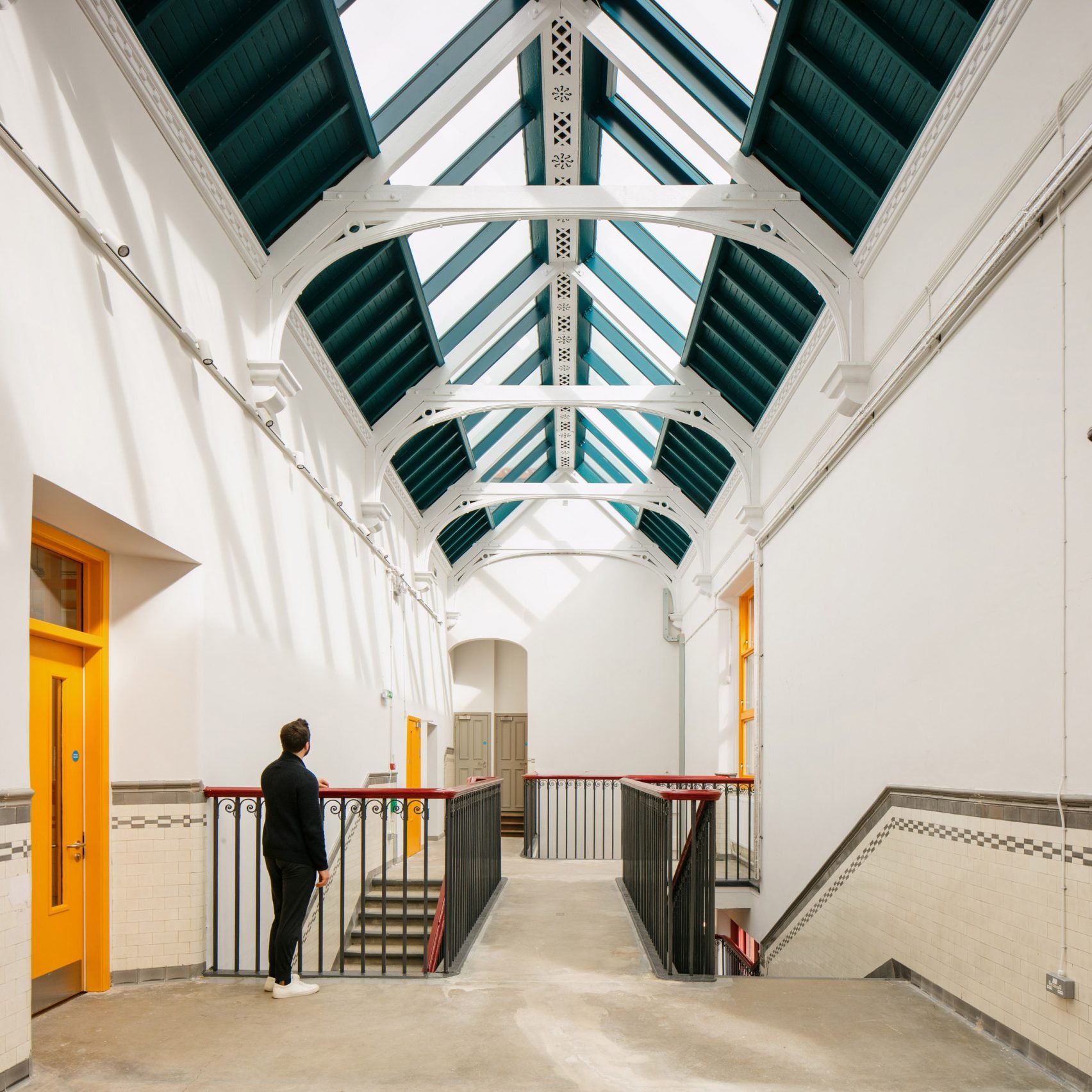
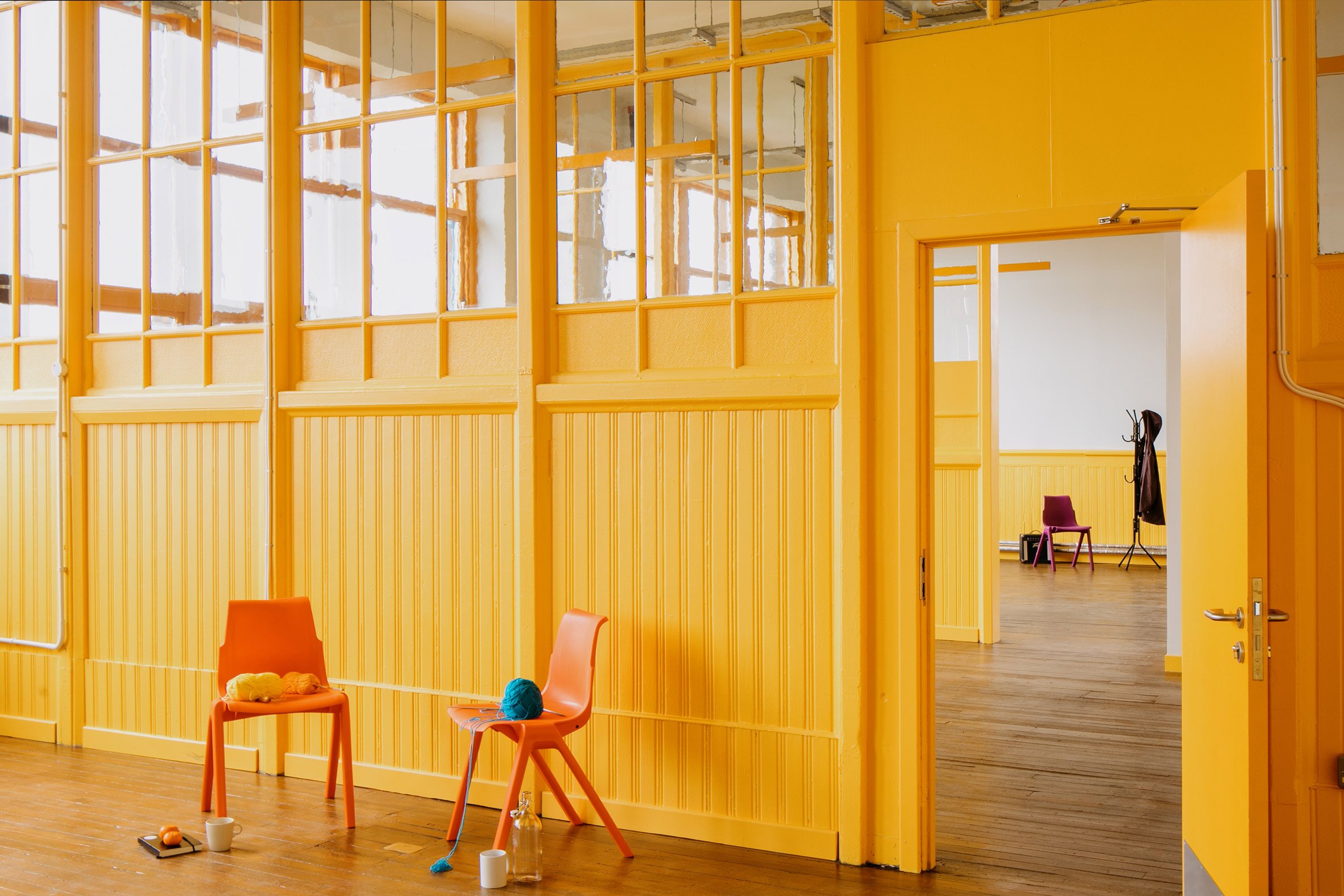
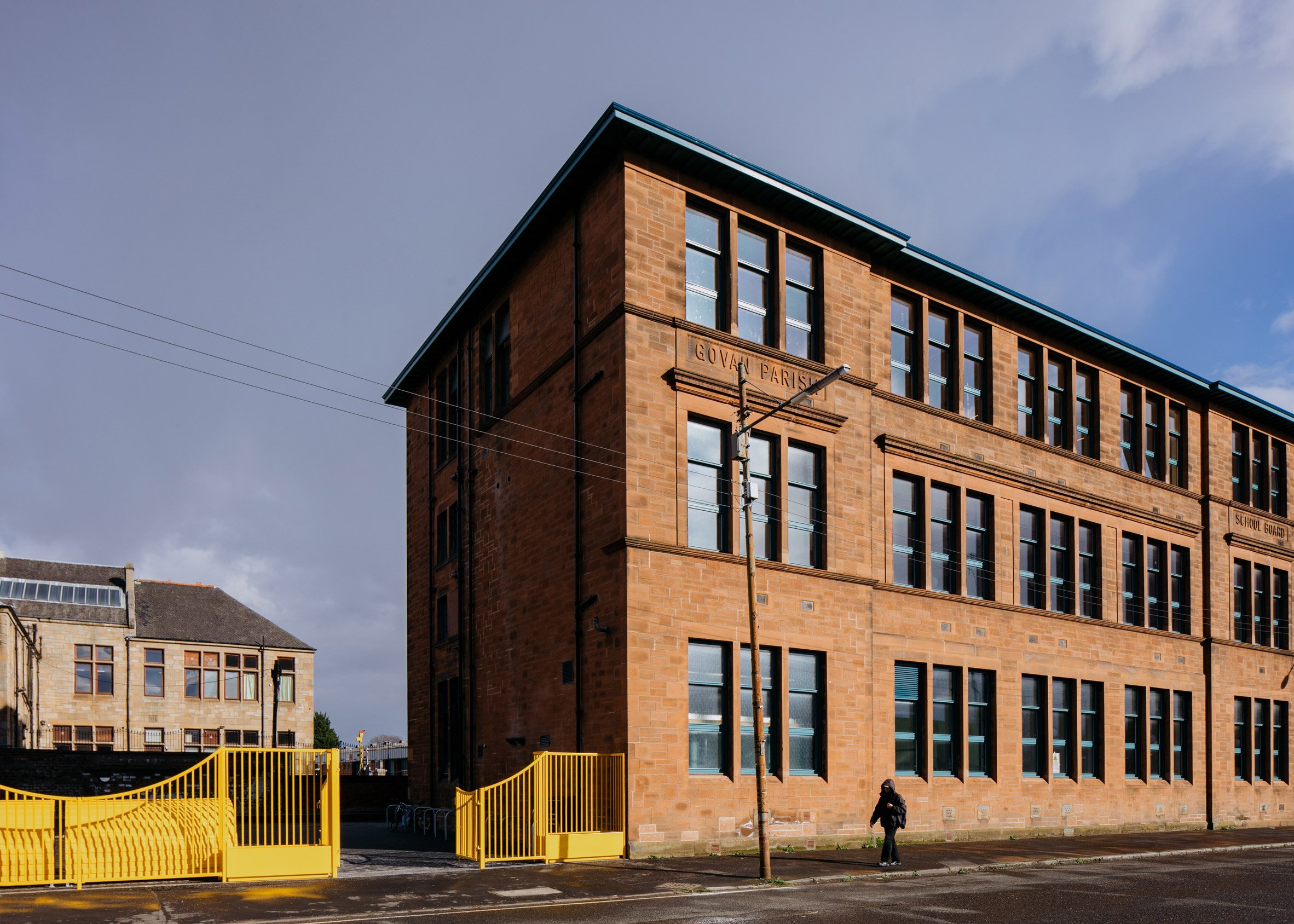
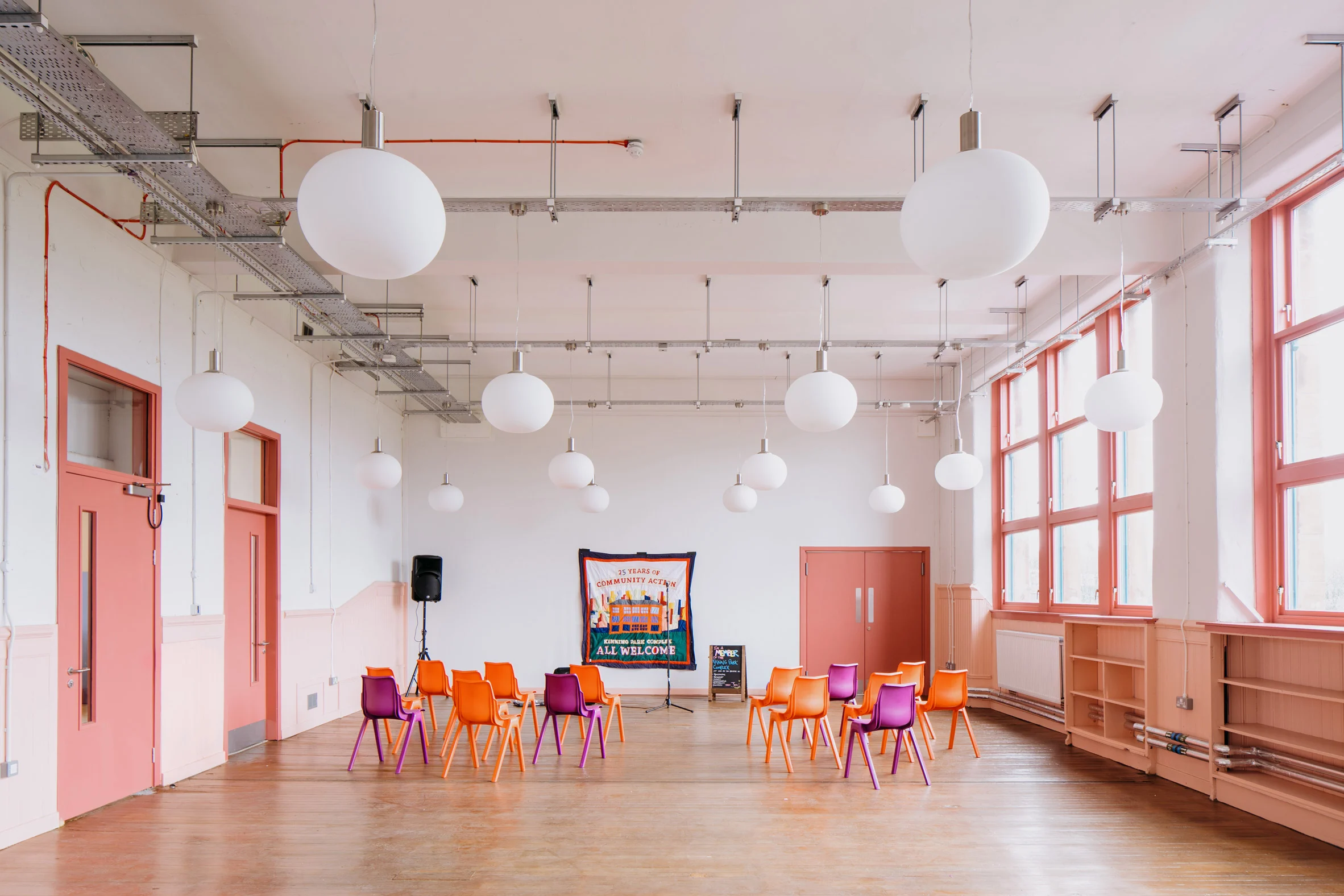

…But for the Kinning Park Complex, the transfer to community control is finally going through now. And in November 2018, the team got a long overdue break, with the award of £1.2 million in funding from the Scottish Land Fund and the Big Lottery Fund.
The complex now has around 15,000 visitors a year and houses a range of sports classes, children’s dance events, a bicycle workshop, gardening group, community kitchen, recovery café, affordable workspaces and the headquarters of the think tank Common Weal.
After a 21-year battle to take control of their building, [anything next] should be a doddle.
The re-opening of the KPC after a hiatus with Covid sees it spending its grants on a refurbishment that is as fresh as it is clever - bold colours and highlighting on often traditional details. Dezeen’s piece says:
"A key decision that we had to make was to ensure that the work that we were doing in the building didn't sanitise this rich, abrasive history of activism and community-led dialogues and debates," said Marc Cairns of New Practice [architects of the upgrade].
"We really tried to keep that at the forefront of our thinking."
Flexible partitions allows the ground- and first-floor halls to be easily subdivided if required.
Other spaces include a quiet room that could be used for anything from prayer to breast-feeding, and a series of small studios and workshops.They hope the building can help to become a positive example of adaptive reuse, particularly in light of the COP26 environmental conference that recently took place in Glasgow.
This sentiment is echoed by Nicola Sturgeon: "The challenge of refurbishing and imagining a building like this, for decades to come, is fantastically dynamic for the architecture and design industries," she said.
"We just took it for granted that buildings would reach the end of their natural life and then they would sort of fall into dereliction, and thankfully communities decided that that wasn't going to happen. So we've learned how to reimagine things for the future and preserve for the future."
Our only obvious comment would be: can we drastically reduce the cycle whereby a property that a community (organised as a CAN) wants to come into its control, can be identified and supported? The expertise, responsibility, enterprise and vision needed for this kind of reanimation is clearly evident. But need it be this hard to achieve?

